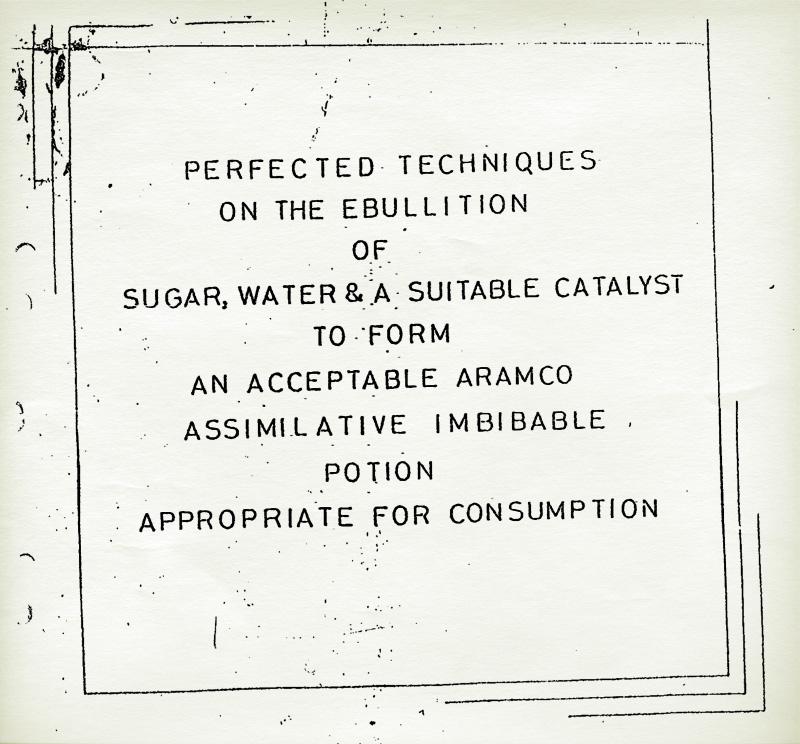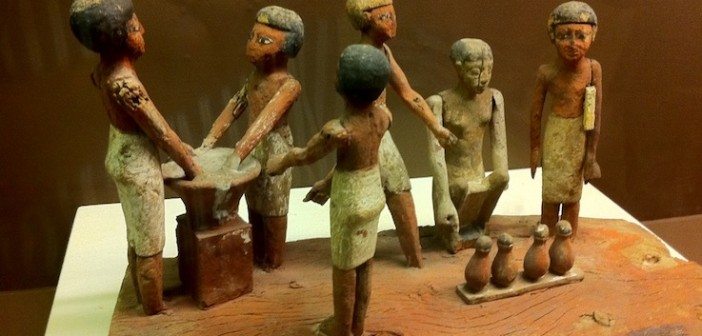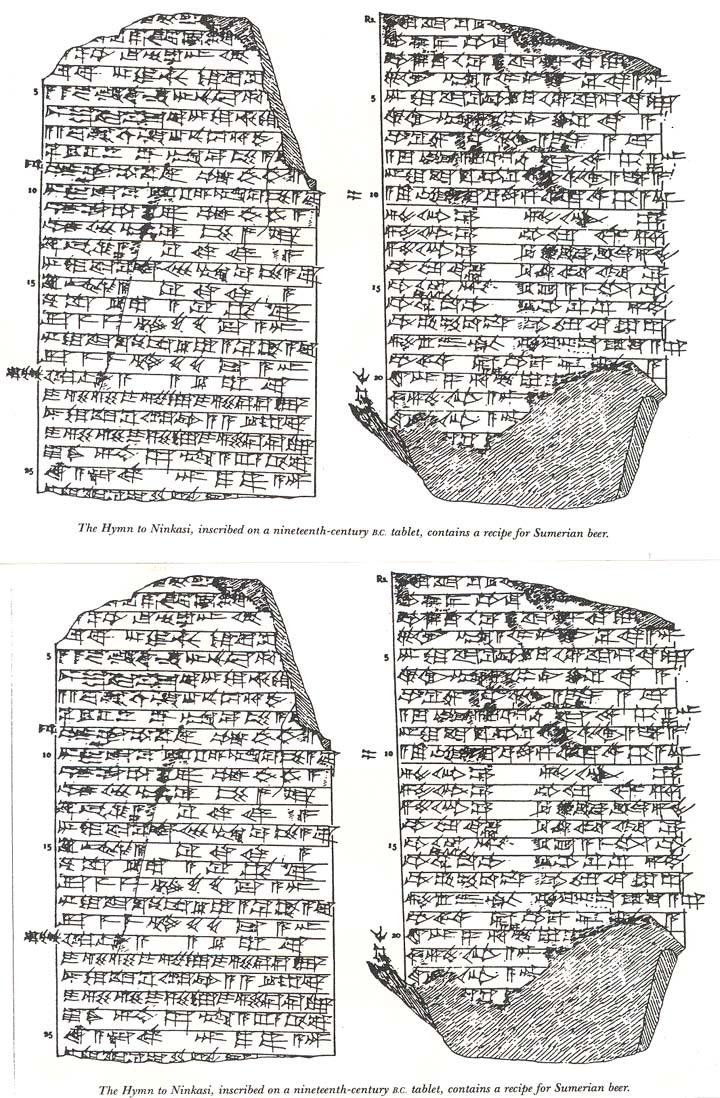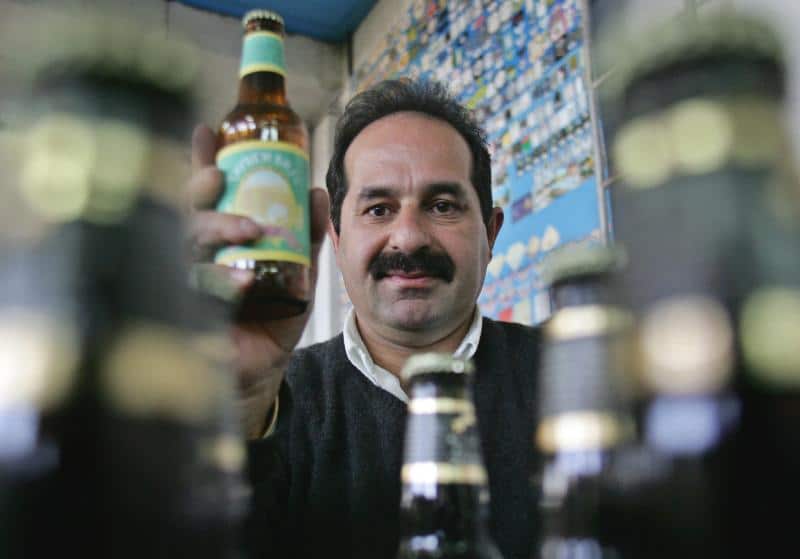By Steve Hindy
When I was a Middle East correspondent for the Associated Press in 1980, I covered an Arab Summit meeting at the InterContinental Hotel in Amman, Jordan. We journalists gathered what news we could from the secretive proceedings, cobbled our stories together, and then spent our evenings around the bar, which was amply provisioned with the world’s best-known liquors and local and imported beer and wine. The Arab Summit was followed by an Islamic Summit, which was attended by the very same leaders. The InterContinental’s bar was shut down in observance of the Islamic ban on alcoholic beverages. I recall the hotel manager telling me that the whiskies, gins, vodkas, and other libations had been transferred to the delegates’ private suites. There was no drinking in public, but the liquor flowed in private.
Beer brewing, winemaking, and distilling all have long histories in the Middle East. In fact, liquor, beer, and wine are still available in most countries within the region, despite the Islamist revivals that have swept the area since the early 1980s. Heineken owns breweries in Egypt, Jordan, and Lebanon—it acquired the Egypt-based, century-old Al Ahram Beverages Company in 2006 and Lebanon’s Brasserie Almaza in 2002 (a brewery that has been in operation since 1933)—and its Middle East division boasts group operating profits of just under $8 million per year. In Lebanon, the main brands are Amstel and Laziza (which means “delicious” in Arabic).
Even in the countries that have banned alcohol outright (some of the Emirates, Kuwait, and Saudi Arabia), non-alcoholic breweries abound. For example, Carlsberg, the world’s fourth-largest brewer, also owns a brewery in Saudi Arabia that produces Moussy, a non-alcoholic brew aimed at upscale and metropolitan consumers. It has a 38 percent market share of non-alcoholic brews in the nation. Not to be outdone by its rivals, in 2002 Heineken purchased the Al Ahram brewing company for control of Fayrouz—its signature malt beverage that claims the unique designation of being the world’s first, and so far only, halal (permissible within Islam) non-alcoholic beer.
It probably won’t be the last. According to an October 2014 report by Euromonitor International on drinks in Saudi Arabia, there is an “increasing presence of international brands in the country in clothing, food and drinks. Low/non alcohol beer, for these reasons, is now highly popular among Saudi Arabian youth, many of whom associate it with a sense of adventure, the thrill of being young and a sense of being free-spirited.”
DRYING OUT
According to Najam Haider, assistant professor of religion at Barnard College, the prohibition of alcoholic beverages was settled among Islamic jurists in the thirteenth century. Originally, some jurists had argued that the Koran only banned wine. Other alcoholic drinks, including beer, they believed, were permitted as long as the drinker did not become intoxicated. Eventually, though, all accepted the arguments in favor of prohibition based on the following verses from the Koran:
“You who believe! Do not approach prayer when you are drunk, until you know that which you utter…” Q4:43
“They question you about strong drink and games of chance. Say: In both is great sin and some utility for men but the sin is greater than their usefulness.” Q2:219
“You who believe! Strong drink and games of chance and idols and divining arrows are only an infamy of Satan’s handiwork. Leave it aside so that you may succeed.” Q5: 90-1
Another verse in the Koran promises wine and women when a devout Muslim enters heaven. The irony of the earthly prohibition and heavenly flow of wine is not lost in author Kamel Daoud’s novel The Mersault Investigation, which was written as a modern reply to Camus’ The Stranger. In Daoud’s book, the narrator recounts a winemaker complaining that he cannot find workers because wine is considered haram (illicit) by devout Muslims. “Ha, ha!” says the narrator. “I’ve always wondered, what’s the reason for this complicated relationship with wine? Why is it treated as though it’s of the devil, when it’s supposed to be flowing profusely in Paradise? Why is it forbidden down here, and promised up there?”
There are still some Sufi sects that dissent from these views, and of course, anyone who has traveled or lived in the Middle East knows many devout Muslims consume alcoholic beverages. The very beginnings of beer, most historians argue, rest in Egypt and modern-day Iraq. The origins of ales and lagers are rooted in the region, whether or not the alcohol they contain is permissible.
This point is made clear in a 2011 TEDx talk by Mazen Hajjar, founder of Lebanon’s 961 Beer craft brewery. In “And Then There Was Beer,” he pleaded with his listeners to understand and appreciate that alcoholic beverages are an important part of the world culture that is rooted in the Middle East.
“Human beings like us have been on their earth for a hundred thousand years,” he said. “For the first 90,000 years we were hunter-gatherers … living in caves. About 10,000 years ago, something dramatic happened and all this changed. We moved out of our caves and starting settling in houses. We grew our own food. Historians like to call this period the Agricultural Revolution. The Agricultural Revolution started with humans domesticating barley and up until recently we believed we domesticated barley because we wanted to make bread. Now we know that is not true. We domesticated barley to make beer.” His young audience exploded with applause and laughter.
Hajjar’s armchair anthropology is supported by many serious academics, notably the University of Pennsylvania professor Solomon Katz, although they often date the first beer to 5,000–7,000 years ago. Some of the earliest evidence of beer-making has been excavated in the ancient Sumerian city of Ur, now just south of Baghdad. Many craft brewers in the United States have recreated this early beer recipe, using the nineteenth-century poem “The Hymn to Ninkasi,” the goddess of beer, as their template. The beer is made by baking barley and then allowing it to ferment in open vessels. Drinkers then sit around an open pot of beer and drink it through straws that filter out the barley seeds and chaff.
Evidence of ancient beer-making has also been uncovered in Egypt, where pottery fragments have been discovered that were likely to have been used for brewing. Ale-style beers were among the oldest beverages ever produced by humankind, and records of these beverages date back as far as the fifth millennium B.C. The Elba tablets from ancient Syria demonstrate early insights into the brewing process. Brewers, in those days, were not only women but were priestesses as well, and their brews were used during religious ceremonies. Even in 1400 B.C., Egyptians were warned against letting their tongues slip in taverns when drinking. One of the outside walls of the Brooklyn Brewery displays hieroglyphs from ancient Egypt that proclaim, “Beer has dispelled the illness which was in me,” as translated by Dr. Kent Weeks, a leading Egyptologist. This may be the earliest beer advertisement.
“The earliest textual reference to beer (the Egyptian word was henket) dates to the Fifth Dynasty of ancient Egypt, but beer jars, with a unique shape that is found throughout Egyptian history, have been uncovered in predynastic and Early Dynastic tombs,” Weeks said. “Small breweries have been found in predynastic contexts at Hierakonpolis and Abydos, where large vats still contained residue of fermented cereals.”
By 1897, Egypt’s local beer industry had caught the eye of Belgian brewers, leading to the creation of the Crown Brewery in Alexandria. The brewery was eventually nationalized under former Egyptian president Gamal Abdel Nasser, conglomerating with Pyramid brewery in the 1960s. Brewing in the ancestral home of beer was on the decline, and there were few positive signs for its future.
OUR MAN IN CAIRO
My interest in homebrewing began in 1980, when I met Jim Hastings, a foreign service officer assigned to the U.S. Agency for International Development at the United States Embassy in Cairo. Hastings had just completed a three-year stint in Saudi Arabia, and he and a few other diplomats made beer at home in the Egyptian capital.
This was before Heineken bought the Stella brand from Ahmed Zayat, the Egyptian expatriate and owner of American Pharoah, the horse who won the Triple Crown earlier this year. In the 1980s, the Egyptian Stella was a hit-or-miss beer: bottles were filled to different levels, a sure sign of quality problems, and some barkeepers even reported finding matches and nails inside of bottles. Worse yet, the beer was rumored to be fortified with a dose of formaldehyde to prevent spoilage—a mummified beer in the land of the pyramids.
The quality of Hastings’ homebrew was several notches above Stella. Hastings told me that the illicit beer brewed in Saudi Arabia was known as “sadiki juice,” sadiki meaning “my friend” in Arabic. I later learned there is a long tradition of homebrewing in Saudi Arabia: the Saudis banned alcoholic beverages in the early 1950s when U.S. engineers and oil workers were pouring into the gulf kingdom to develop its oilfields. Knowing that these expats would be loath to toil in a parched desert with no access to women or beer, the Arab American Oil Co., ARAMCO, issued a pamphlet to its employees explaining how to make beer, wine, and spirits at home.
The title page of the 31-sheet mimeographed pamphlet was designed to hide the contents of the publication and perhaps make a joke about the flowery indirection of the Arabic language.

The title page of a 31-sheet mimeographed pamphlet handed out to Westen employees of the Arab American Oil Co (ARAMCO), circa 1950.
The introduction to the anonymously authored piece says: “Those of us who have spent time in Saudi Arabia discovered that there was a generous quantity and wide variety of alcohol available even though it was absolutely forbidden to possess, sell, carry, drink or manufacture. Moreover, we discovered that it was of excellent quality, nearly hangover proof, and every ounce manufactured in almost any household kitchen.”
THE MIDDLE EAST’S BEER RENAISSANCE
As of 2015, however, brewing craft beer has left the kitchens of expatriates and has begun to enter the mainstream. Israel and other Middle Eastern nations have seen insurgent microbreweries taking on larger, dominant brewers. There are now more than 20 U.S.-style craft breweries in Israel, one in Jordan, four in Lebanon, and one in Palestine’s West Bank. Although alcoholic beverages are strictly forbidden in Saudi Arabia, Kuwait, and Iran, homebrewing is common in all three.
Hajjar, a former journalist who also worked in the airline industry, started 961 Beer in 2006, named for the telephone country code of Lebanon, the most diverse and liberal nation in the Middle East. When the Israelis were bombing Lebanon and Hezbollah was launching rockets into Israel, Hajjar started selling pale ales, porters, and wheat beers to a populace that believed beer could only be like Amstel or Laziza, both light lager beers made in what might be called the international style.
“I started 961 because I got tired of drinking fizzy light lager beers,” said Hajjar. “But people in Lebanon could not understand how a red ale or a dark porter could be beer, or why there was sediment in the bottom of my wheat beer. People thought there was something illicit about what we were doing. Our biggest challenge was educating beer drinkers. There was no beer culture, and worse, we had Heineken fighting us with their endless resources.”
Hajjar was determined to establish 961 in Lebanon, and eventually he exported his beer to more than 25 countries. He said the Muslim fundamentalism sweeping the Middle East was not an issue in Lebanon. He compared the Islamic prohibition of alcohol to the Protestant Christian fundamentalism that championed prohibition in America in the 1920s. “Prohibition has failed in the Middle East the same way it failed in America,” he said.
Now married with a young child, Hajjar has moved to Melbourne, Australia, and started Hawkers Beer, named for the Lebanese immigrants who have spread around the globe hawking consumer goods in the streets.
“I felt I accomplished what I set out to do in Lebanon,” he said. “961 is established and now there are three more craft breweries starting up. Craft beer is booming in Australia, and I love Melbourne.”
Hajjar has counterparts in the rest of the region. In Jordan, Yazan Karadsheh started his Carakale Brewery in 2009 after spending his college years at the University of Colorado in Boulder, one of the focal points of America’s craft beer revolution. He worked for Halliburton in the oil fields of Wyoming before taking a job at a homebrew supply store in Boulder. He eventually graduated from the master brewing program at the University of California at Davis and worked at Boulder’s Upslope Brewing Co. before returning home to start Carakale, named for an endangered species of desert lynx.
Karadsheh is a member of Jordan’s minority Christian community. He had trouble finding a location for his brewery because some conservative Jordanian property owners did not want to rent to a brewer. He found a site on a winding road near the Christian village of Fuhais overlooking an olive grove. He encountered the same obstacle as Hajjar and craft brewers the world over: Most beer drinkers think of beer as only the light lager style championed by the brewing world’s giants: Anheuser-Busch InBev, South African Breweries-Miller, Heineken, and Carlsberg. They have to be educated to appreciate the rich flavors of the craft beer world—pale ales, hoppy IPAs, porters, stouts, dark lagers, bocks, and Belgian-style singel, dubbel, and tripel ales.
The granddaddy of the Middle Eastern craft brewers is Taybeh Brewery, in the Israeli-occupied West Bank of the Jordan River. (Taybeh is another word for “delicious” in Arabic.) Taybeh is the West Bank’s only exclusively Christian town. The brewery was founded by Canaan David Khoury in 1994 and now is run by his son, brewmaster Nadim Khoury, a graduate of the University of California-Davis, and his brother David Khoury. The Khourys returned to Taybeh after the Oslo Accords between Israel and Palestine were signed in 1993. Their brewery stands as one of the more durable legacies of the Oslo Accords. Palestinians don’t have their own state, but they do have their own beer.
Taybeh offers tours to the public and runs a very successful summer festival and Oktoberfest. The Oktoberfest was cancelled in 2014 in recognition of the tragedy of the 50-day Israel-Hamas War in the Gaza Strip, but the popular festival is returning in 2015.
Israel got its first craft brewery and pub in 2009 when former Brooklyn resident David Cohen decided to immigrate to the Jewish state and open a brewery. The Dancing Camel brewery in Tel Aviv was inspired by the American craft beer movement. Cohen was a homebrewer and a member of the New York City Homebrewers Guild, a club that was cofounded by Brooklyn Brewery brewmaster Garrett Oliver.
The story of the Dancing Camel is based on a short story, “The Dancing Camels,” by Dov Silverman. In the story, a rabbi who is a singer, musician, songwriter, and poet leaves his home in Damascus and walks toward Galilee. He is captured by Bedouin highwaymen, who plan to rob him. The rabbi begins to play his flute and the raiders’ camels begin to dance to the music. The animals huddle around the rabbi, protecting him from the thieves, who eventually flee.
The new generation of craft brewers in the Middle East were all inspired by the North American craft beer revolution—craft beer has captured 11 percent of the U.S. beer market and is growing apace—but the trend can hardly be characterized as American cultural imperialism, because beer brewing is so deeply rooted in the culture of the Middle East.
Around the world, the craft beer revolution is marked by collaboration. In the United States, more than 3,700 breweries compete with each other for sales and shelf space in their various markets, but they also come together through their trade association, the Brewers Association, to work for the common good. The entrepreneurs who started these companies meet every year at the Great American Beer Festival and the Craft Brewers Conference and exchange ideas and beers. Indeed, beer has a way of bringing people together. It would be fitting if this spirit could one day bring together the craft brewers of the Middle East, the place where beer was born.




